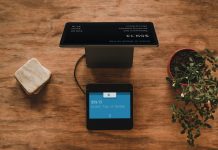A few decades ago software used to come packed in boxes or as CDs. Since then we have come a long way and now software applications are used as completely evolving programs.
Software applications are no longer built once and for all but they are continuously built spanning over indefinite time to come. This couldn’t be possible without the shifting paradigms and approaches pertaining to software development.
Towards Continuous Improvement Approach

Nothing in the software world today is considered to be done and dusted as we have agile development approach amidst us in full force.
Scrum developers or developers using any of the agile methodology just work to meet the basic criteria for building a software product while always remaining open for value additions and changes that are likely to be incorporated over time.
This is why, by fulfilling the checklist of the things to be done software developers only consider the project to be relatively complete.
This approach is termed as “works as designed” which means the software does what it is told to do now while it remains open to continuous improvement. This apparent definition of “completed” project is something of real significance to understand how an agile approach is incorporated.
How in the last analysis will the “completed” tag mean for a software product? Well, the answer to this question mainly rests with the customers.
By evaluating the customer behaviour and their needs we can measure how far the software solution is being able to address their needs and what else the software needs to meet user requirements. These are called measured outcomes that guide developers to improve the product further.
How can the required improvements be incorporated into the software product for better user experience? Well, the decision making for adding value to a software product should incorporate product managers, process managing tools, developers and designers.
For the agile development process to deliver an engaging User Experience (UX) the development company needs to consider the input of the designers with utmost importance besides the role of developers and product managers.
Bringing Together Design-driven and Agile Approaches
While digital product development is mainly focused on the execution of the features, UX design is more empathetic and intuitively focused on the user experience more than anything else.
Because of this unflinching focus on the end-user experience, design-driven innovation plays a key role for major brands ranging from Apple to IBM. Design-led companies are increasingly outperforming other brands in terms of growth and market share.
While agile approach traditionally didn’t take designers as seriously as they are now, over the years the gap between design thinking and agile development continued to decrease and finally we have agile UX design approach in place.
In this respect, it is important to know how software designers really helped to build a fully user-focused product that is not merely a construction comprising a plethora of features, but a software product built for a variety of user contexts.
Most developers just bring together features within a software product that can be utilised purposefully.
But while the features really fail to have any resonance with their target audience, they are clueless about what is really wrong. In spite of glitch-free performance and speed, a software product can just fail simply because it lacks a user-centric design.
The developers using construction approach for design just fail to address user contexts with pathos and intuition. This is exactly where UX designers play a key role in packaging the software features within an user-centric design.
Now, how can the agile approach be incorporated into UX design? How can the value propositions of both can be incorporated to the benefit of all users? This is what our inquiry is all about.
To make both agile and design-driven approach work together is the key to success for software development now. Instead of one approach conforming to the other, both actually need to work side by side.
Agile Is Here to Stay
Here we need to spare a few words about why agile approach cannot be dispensed with. Well, an Agile approach is here to stay because it transformed & thus we can consider continuous development.
Nobody can revert back to waterfall development because development pace, concurrent testing, transparent process, continuous development, and concurrent processes became an integral part of modern software development practices and methodology.
Since issues are detected faster and features are built faster with an agile development approach, no software development company can revert back to already obsolete waterfall development methodology.
Agile brought more accountability and the ability to track development progress like never before. The smarter development process in modern development companies embraced the Agile approach so deeply that there’s no going back from this. Agile almost embodies a point of no return for software developers.
User Research and Usability Testing: Agile Development vs UX Design
One of the key challenges faced by Agile development is concerning the lack of user research and usability testing.
This is also the area where UX designers can play a very effective role. Without validating the software design and the User Experience, many software projects simply fail to make any resonance with the target audience.
On the other hand, conducting user research is key to good UX development. When UX designers bring design-driven approaches to agile software development by conducting extensive user research and usability testing it gives the best output in terms of audience engagement and business conversion.
While development companies because of extreme pressure on deadlines just push development process extra hard skipping the usability testing altogether, this often causes really disastrous impact on the final outcome.
The lean UX techniques comprising low-fidelity prototypes and methods like wireframing and sketching, on the other hand, help the development company to validate the product idea and overall UX design attributes with target users.
Agile development embracing usability testing and user research with these lean UX techniques can actually mitigate the shortcomings of a product.
Some Useful Tips for Agile UX Team
Since the agile development and UX team need to embrace each other for the benefits of their projects, let us introduce here some key tips that Agile UX team of developers and designers should keep in mind.
1# Maintain A Consistent Team
To build a solid team comprising domain experts takes time. You need to keep together the team consistently for agile UX projects. The disruption of the team every once in a while can actually harm the execution and output of your projects.
On the other hand, by keeping the unique team dynamics intact for a considerable time you can boost efficiency.
2# Have A Proactive Approach
If you are into a project for long stretches of time, you need to make sure that the risk factors are updated regularly.
Instead of reacting to the inputs of different team members, you need to engage and collaborate with the team members.
You need to get involved in every aspect of the design and development process and remain open about sharing your ideas and contributing new insights.
3# A Dedicated Scrum Master
When you are just starting with an agile process, it is advisable to have a dedicated scrum master who can always be consulted to deal with unexpected challenges.
As a teacher, coach, and evaluator a professional Scrum master can take notice and give directions whenever something goes wrong.
4# UX Must Stay Ahead of the Race
Just because Agile is more focused on development aspects, doesn’t mean UX will have less influence on the project.
Actually, UX designers should be ahead of the race. Expert UX designers will always contribute ideas for every aspect ranging from shaping the backlog tasks to wireframing to usability testing.
Before the agile sprints take place UX designers must be ready with their concepts and planning.
With the UX concept already put to paper, the developers already have their required design ready just before starting with the development sprints.
5# Allocating Dedicated Designer for Every Team
When you have an Agile UX approach of development and design, you need to make sure that every team gets at least one dedicated designer. While the developers will engineer and construct features, the designer will help to shape the user experience.
6# Customer Exposure for Every Team
Every team should spend some time with the intended customers or users of the product to get a fresh perspective about the user experience. This will help them orient their work with the UX demands of the product.
Conclusion
With the current state of things, the integration of the agile and UX design approach looks imminent. It would be particularly interesting to see how the UX integration with agile development happens across demanding enterprises, where the size and complexity of software pose great difficulties for the project managers.
Agile and UX Design are likely to join forces and get more matured over time. As these approaches converge together and offer more innovations, software development and end-users can be tremendously benefited.
Author Bio: Chirag Mudsa is the CEO of leading UI/UX Services Development Company, CMARIX TechnoLabs Pvt. Ltd. He is a goal-driven tech evangelist for a long time of 17 years, specializing in web and mobile development domains. His innovative spirit, strong leadership skills and a profound commitment to organizational growth have given him a key leading position in the industry. Follow him on FB & LinkedIn.















